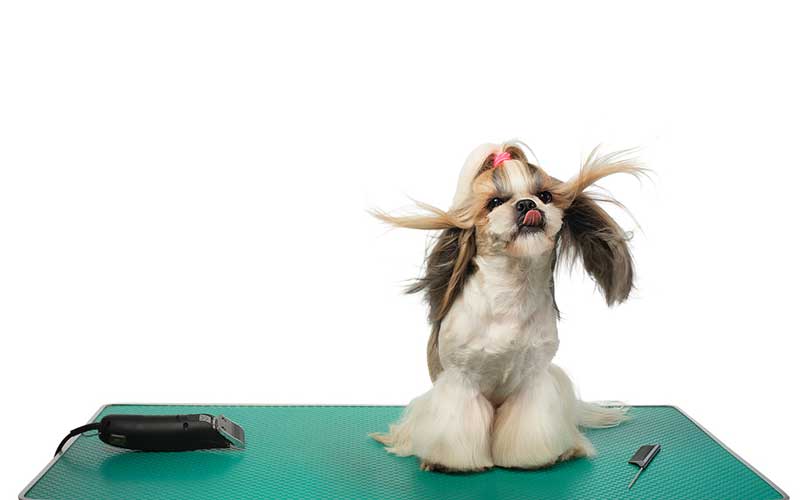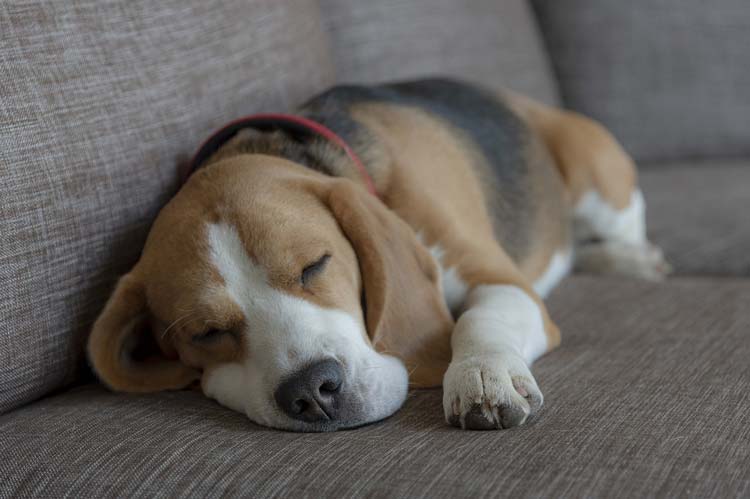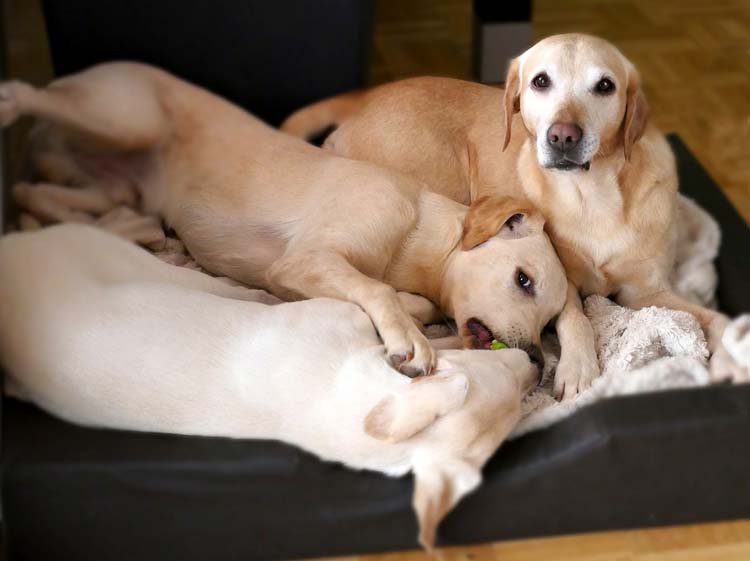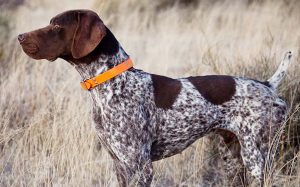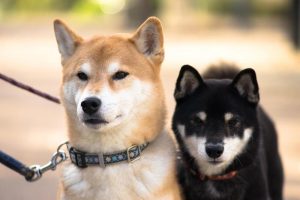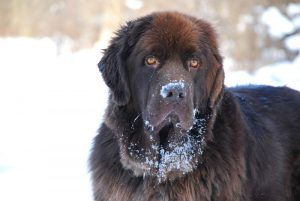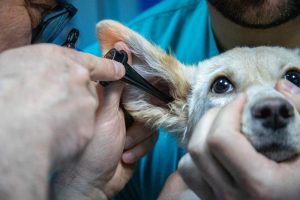
As small and delicate companions, Chihuahuas pack a lot of loyalty and expressiveness if they are treated properly. Aside from the TLC that comes from playing with them and grooming, a proper diet should be to keep them fit and away from health concerns. So, how much should you feed a Chihuahua, and how often?
Small breeds like the Chihuahua need extra care when it comes to feeding them due to the likelihood of obesity. They don’t have a lot of capacity in their stomach so they shouldn’t be overfed. Always make sure they stick to a diet plan and schedule.
On their puppyhood journey, it pays to look into the amount of food they will eat each meal. It should be divided as equally as possible to avoid getting sudden hunger pangs throughout the day, which could lead to weight issues and excessive begging habits.
See also:
In this guide, we will help you to give the best nutrition for your Chihuahua puppy so they will grow up to be healthy and energetic dogs in the future. Read below for some tips and tricks on feeding your puppy, such as setting schedules, portions, what to feed them, and more.
Page Contents
How much to feed a Chihuahua puppy?
With a small breed like the Chihuahua, you need to be very careful with feeding them because of their size. A good rule of thumb is to feed about 1/4 cup per day and 1/2 cup during their later years leading up to adulthood.
The best and most usual way to find out how much your Chihuahua puppy needs per day roughly depends on their activity levels, as well as their age in weeks or months. This daily cup amount should be split equally into 3 meals per day.
Chihuahua puppies that run around even more than the rest of the litter (if any) should get fewer calories to avoid being overfed. When in doubt, consult your vet if you suspect that your pup needs help with weight management.
Feeding Chart
If you’re wondering how much, how often, and when to feed your Chihuahua puppy in specific age brackets and milestones, here’s a handy chart that we put together just for you as a general reference:
| Chihuahua puppy age | Recommended meals per day |
|---|---|
| 2 months | 4 to 6 |
| 3 months | 4 to 6 |
| 4 months | 3 to 5 |
| 5 months | 3 to 5 |
| 6 months | 3 to 4 |
| 7 months | 3 to 4 |
| 8+ months | 2 to 3 |
Additionally, you can scale between one-fourth and one-half cups for your Chihuahua puppy on their daily food intake – simply divide this amount equally into the number of meals per day. For instance, if you need to feed your 2-month-old Chihuahua puppy 4 times a day, that would be 0.063 to 0.125 cups per meal.
You may find it a little tricky to feed Chihuahuas due to the frequency of their meals, especially during their young stages. However, since their tummies are very small, they should be fed more often in little amounts to avoid bloating and other digestive upsets that come from gobbling too much.
Growth Chart
Are you curious how heavy your Chihuahua should be (or will be) when they reach a certain developmental milestone? Here’s a chart to guide you with recommended and ideal weights. Keep in mind that this is only a general chart for Chihuahuas as every puppy grows differently:
| Age in Month | Weight in Kilogram | Weight in Pounds |
|---|---|---|
| 1 month | 0.1-0.4 kg | 0.3-0.8 lbs |
| 2 months | 0.5-0.9 kg | 1-1.9 lbs |
| 3 months | 0.7-1.4 kg | 1.5-3 lbs |
| 4 months | 0.9-1.8 kg | 2-4 lbs |
| 5 months | 1.1-2 kg | 2.5-4.5 lbs |
| 6 months | 1.3-2.2 kg | 2.9-5 lbs |
| 8 months | 1.4-2.5 kg | 3-5.5 lbs |
| 10 months | 1.4-2.6 kg | 3-5.8 lbs |
| 12 months | 1.4-2.7 kg | 3-6 lbs |
| 24 months | 1.4-2.7 kg | 3-6 lbs |
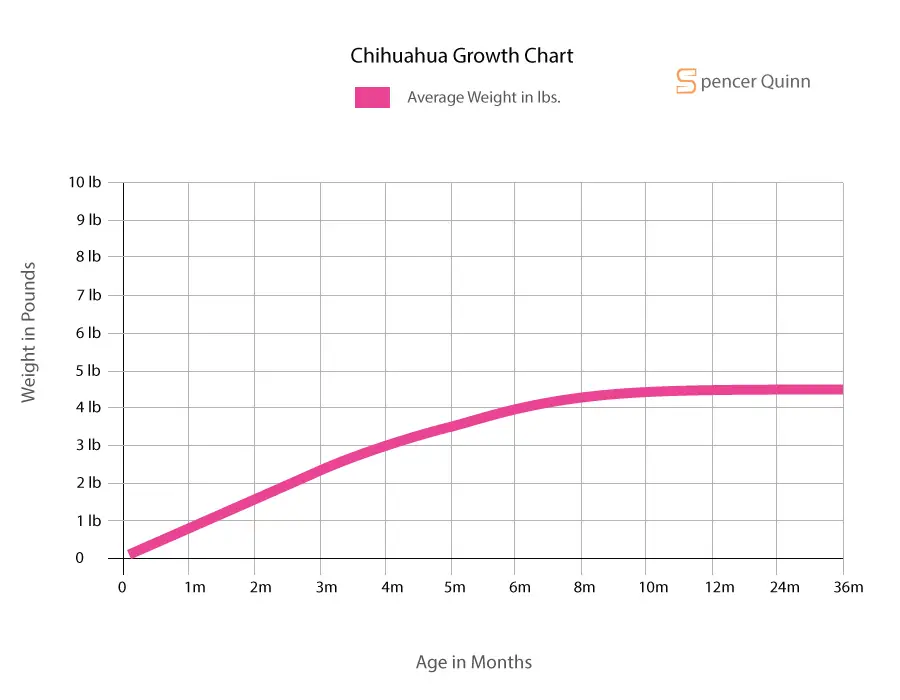
Based on the chart above, Chihuahua puppies are very small and even their final adult weight will be just somewhere between 2 and 6 pounds. This is why extra care with regards to their diet is crucial to maintaining a healthy puppy to adulthood and beyond.
If you want a more detailed insight on how Chihuahua pups develop during their life stages, we’ll narrate what to expect below:
Birth to 2 weeks old
During these earlier stages of life, your Chihuahua puppy will need to depend entirely on its mother’s milk. All the nutrients that they will need should come from nursing. Make sure that they are in a comfortable place and undisturbed by outside factors.
Do you see your puppy being overwhelmed by other pups in the litter? If so, they might not be getting enough milk from their mother. Therefore, it’s your job to keep them healthy by ensuring they get their equal opportunity for being nursed.
If it doesn’t work out, you can ask your vet for an alternative, such as a puppy formula to help them keep up. This process of telling apart thin and healthy puppies is quite tricky since Chihuahuas are a small breed so it’s best to get vet and/or breeder advice.
3 to 5 weeks old
Your Chihuahua puppy will also eventually walk around more, so be sure to watch over them while they explore. The least you want is for them to pick up foreign objects or human food which are not meant for them and chew, especially if they are toxic to pets.
We recommend puppy-proofing your home as early as possible to avoid untoward incidents. Either way, their 3rd week shouldn’t be much of a problem yet since their coordination skills are still not so developed. They will likely stay close to their mother during this time.
Once your pup reaches 4 weeks of age, it can be slowly introduced to solid food. First, mix 3 parts water and 1 part of your preferred puppy food brand that’s suitable for their age and breed. The idea is to make solid food easier to digest for your Chihuahua puppy, especially with their tiny tummies.
Offer the mixture of food and water several times a day and see what happens. Don’t feel disheartened if they keep refusing at first – remember that weaning is a process that won’t be in a blink of an eye. Puppies might still be skeptical of the new food so take your time for them to eventually get interested.
It might help if the mixture has bits of canned food with gravy since it will get the attention of your Chihuahua pup due to the flavorful smell. You may also add some other ingredients like vegetables and other toppers for variety but consult your vet first.
6 weeks old
Keep offering the mixture from before and by this time, they should already be more interested in it than before. It takes patience and dedication – you may also want to observe how much they are eating from it. If you think they’ve gobbled a lot, you can try decreasing the liquid little by little (more on that below).
Your puppy will still drink from their mother at certain times. However, as your Chihuahua pup gets older; their mother will slowly part from the puppies when it comes to nursing. She might even nurse while standing up and then drift off as if implying that her puppies need to get food on their own.
While all of this sounds tedious, keep in mind that they are normal parts of the weaning process. Feeding your puppy with solid food takes time since this will be a long transition. By this time, nursing would be less frequent but still there, so continue to offer the mixture to your Chihuahua puppy.
Remember that when you try to feed the mixture, don’t leave it out longer than 20 minutes to keep it from spoiling. Not only that – your puppy will realize that food is not always available so they should eat when they are hungry. After all, free-feeding will likely lead to obesity.
Eventually, you can switch sides with the puppy food and water mixture – start with half of each and then more of the puppy food than the water. This transition could go on for a couple of days and gradually for the best results. It will also train your Chihuahua puppy with solid food.
8 weeks old
Once your Chihuahua pup reaches this age, they can be fully separated from their mother. You can get them adopted by this time or if you’re looking for a puppy, this is the ideal age to adopt them. Make sure you brief with your breeder to know about specifics when it comes to feeding, grooming, and whatnot.
For instance, discuss the feeding schedule and the brand of puppy food used for them. When transitioning from one brand or type of food to another, always do it slowly and in a portioning method. This will avoid digestive upsets that will ruin your Chihuahua puppy’s health.
We strongly advise you to stick to the schedule that the breeder used for your pup. If you’re adopting one from a breeder, be sure to ask about it and what they eat, as well as other Chihuahua diet specifics. This will give you an idea of your Chihuahua puppy’s eating routine to avoid digestive upsets.
If you have a re-homed Chihuahua puppy, make sure to properly introduce them to the surroundings to avoid being shocked or stressed. A puppy might not eat well if they are suddenly overwhelmed with strangers in a new environment.
You can set the pup apart from the older members of the fur family if you see them too scared to eat. Then, gradually, have them join with the rest once they’ve socialized with the other pets around the house. A proper introduction is important to keep your Chihuahua stress-free, which could affect their diet.
10 weeks old
At 10 weeks of age, your Chihuahua puppy should be fed at least three times a day with equally-divided portions. Again, stick to either 1/4 or 1/2 cup per day because Chihuahuas are small dogs with limited stomach capacity.
If you observe intense activity on your Chihuahua pup, consider adding more to their daily diet. However, make sure that you observe their waist to not go overboard with feeding. An excited puppy doesn’t always mean hunger.
At 11 weeks of age, a Chihuahua puppy could become overweight if they aren’t supervised carefully with their daily meals. Visually inspect your pup’s waist to see if it is just right – it should not be too bulky and not too thin.
Chihuahua weight is difficult to balance because of their nature as small dogs and their body composition. If you aren’t sure, you may ask your veterinarian for help in figuring out if they need some weight adjustments along the way or dietary changes.
12 weeks old
When they reach 12 weeks old, consider reducing their food amount to less than half a cup. That’s because they are closer to their adulthood and will need fewer calories than usual to avoid weight issues. Nonetheless, maintain a strict eating schedule of three to four times a day for your Chihuahua puppy.
Since Chihuahua puppies are also prone to tummy issues, be wary when your pup starts to have problems with food. Ask your vet or breeder if you think your puppy might have some food allergies so you can switch food brands or types as early as possible.
For a change in dog food brands, always ensure that you change slowly in portions rather than surprise your pup to avoid digestive upsets. If your Chihuahua has a history of food allergies, be cautious and look for the ingredients on the label to make sure they are eating the right kind of food.
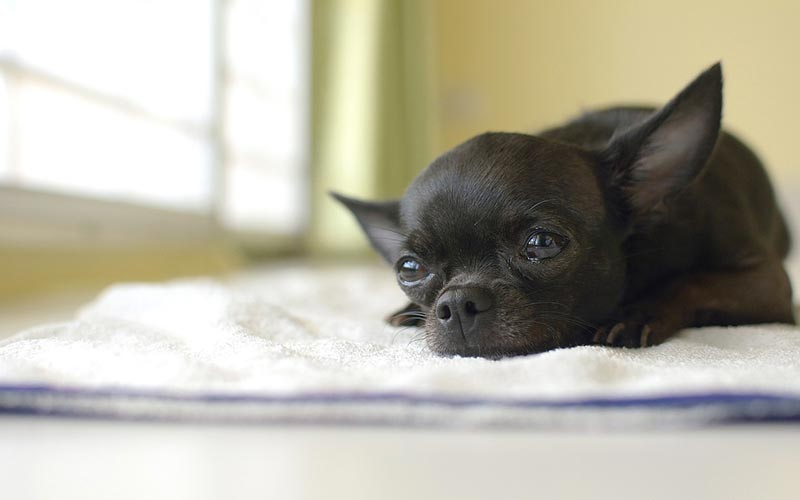
Recommended Food
Now that we know how a Chihuahua puppy should be fed in terms of scheduling, amount, and whatnot, what should they eat? Whether you’re new to raising a Chihuahua pup or just want a guide, here are some recommended food types for them:
1. Lean meat
Choose a mix that has chicken, fish, or any specific kind of meat as the first and/or main ingredient. This will ensure that it has little to no fillers that won’t add any nutritional value to your puppy’s meal.
Meat is always a staple in the canine diet – Chihuahuas included. By far, the most common food ingredients you can look for when it comes to protein sources for your puppy food include chicken, beef, fish, lamb, turkey, and bison if available.
Quality meat will provide your Chihuahua pup with sufficient protein for energy and muscle strength. Consider high-standard puppy food instead of cheap supermarket choices if you want the best for your puppy – and especially if they are prone to food allergies.
2. Low-fat food
When choosing the right food for your Chihuahua puppy, make sure it is low in fats. As a small breed, they don’t need a lot in their tummy so consider getting kibble that’s meant for their size. Check the fat content of your intended dog/puppy food and consider a different option if it contains too much fat.
3. Quality kibble and crunchy food
Most Chihuahua owners will tell you to consider adding more kibble than wet or canned food. More often, gravy-rich food has more calories and fats that are not that suitable for a Chihuahua’s small diet. Instead, stick to teeth-cleaning dry food.
Kibble is a good choice for puppies with a history of dental problems. Chihuahuas usually need stronger teeth due to being a small breed so having crunchy foods such as kibble will help with their overall dental health.
4. Glucosamine-rich foods
Because Chihuahuas are prone to hip dysplasia due to being a small breed, as well as luxating patellas (kneecap problems), you’ll need to give them foods that are rich in glucosamine and chondroitin. These foods will strengthen their joints and reduce the risk of the above-mentioned health problems.
You will find glucosamine in most seafood-based puppy mixes, as well as those containing chicken feet. If your vet advises supplements, they might also recommend glucosamine for your Chihuahua puppy when needed.
Foods to Avoid
Chihuahuas are delicate when it comes to proper diet since they are a small breed with limited capacity (and could be prone to health problems if not fed correctly). Therefore, here are some don’ts when it comes to feeding your Chihuahua pup:
Puppy foods with mostly fillers
As much as possible, avoid fillers such as wheat and corn. While they are okay as carbohydrate sources for humans, for canines, they are treated as extra bulk and give little to no nutrition. Chihuahuas, as a small breed, need to be fed properly and additional filler ingredients would only cause an inconvenience to their weight.
Aside from that, some of these fillers might upset your puppy’s stomach. Take caution – especially if your Chihuahua puppy has a history of digestive upsets. Consult your breeder or vet to know more about certain brands of puppy food that suit Chihuahuas (which are filler-free) when it comes to proper nutrition.
Artificial colors and preservatives
These don’t belong to a healthy diet because they will only give your Chihuahua puppy some health problems in the future. For instance, your pup could get a bad stomach or food allergies if they eat too much food with artificial flavors.
While they add more taste to your puppy’s food to make them palatable, it’s not a good idea to make your Chihuahua pup dependent on these. MSG, for instance, could lead to mood swings and heart problems. Instead, look for foods with higher-quality and healthier ingredients – no artificial flavors.
Non-specific meat sources
These questionable foods that don’t list the exact animal in their ingredients are quite shady. You’ll never know if they could be road-kill or random animal parts that aren’t recognizable, which is bad for your Chihuahua puppy’s health.
Instead of these non-specific meat sources, look for a puppy food that indicates certain types of animals, such as chicken or turkey, as the first ingredient. In this way, you will feel confident about your pup’s nutrition and that they’re getting clean food.
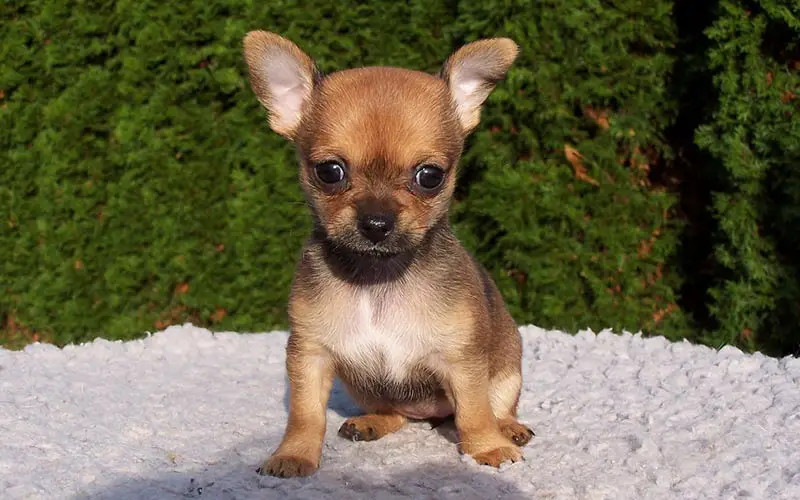
FAQs on Feeding a Chihuahua Puppy
If you want to feed your Chihuahua pup properly, you’ll need to do some more research. Fortunately, we’ve compiled some fast facts and common questions asked by people who want to know more about a Chihuahua’s diet:
When it comes to choosing the right food for your Chihuahua pup, make sure it has little to no artificial preservatives or flavors. Consider food mixes with herbs and vegetables instead. Don’t give them foods with too much filler content like wheat and corn.
Glucosamine and chondroitin are a must for a Chihuahua diet since the breed is prone to hip dysplasia and various other joint problems. Omega fatty acids are also welcome since they are helpful for your puppy’s overall skin health.
Consider chicken, beef, fish, and other specific meat sources when choosing puppy food for your Chihuahua. Moreover, keep the fat content low since you don’t want an overweight Chihuahua!
Treats are okay to be given to your Chihuahua puppy but in moderation. If you’re training your pup to do certain tricks, it might be helpful to reward them with a few puppy treats. However, don’t overdo it! Chihuahuas could even develop bad begging habits if they’re given treats excessively!
After all, we did mention that Chihuahuas have a small tummy so feeding them too much is not a good idea! Keep the treats to a minimum and include them in your daily calorie count to avoid going overboard for your Chihuahua pup.
If you don’t have a lot of time to observe them all day to ensure they only eat a certain portion of food, you’ll need to employ other methods. For instance, you can try an automatic food dispenser or a special toy where food comes out as your pup plays with it.
This toy will dispense food and keep your Chihuahua busy, allowing them to “work for their meal” instead of just getting it instantly. They also get an additional workout before the meal so it’s a nice way to exercise them while you’re out.
On average, Chihuahua pups need more calories than adults do, which is about 50 calories for each pound of your puppy’s weight. Simply decrease it to 40 or less once they’ve grown into adults or aren’t especially active.
If, for some reason, the food isn’t working out with your Chihuahua puppy, why not try a different brand? Food allergies are common with Chihuahuas and that’s why there is usually trial and error when it comes to finding the right brand for them.
To introduce a new food into their daily plate, make sure you have enough transition time. First, start a week with only 1 part of the new food and 3 parts of the old formula in their bowl. Then, put half of each on the second week, following with 3 parts of the new and 1 part of the old on the third week.
By gradually transitioning your Chihuahua puppy, their digestive system will thank you for being so gentle. After all, Chihuahuas have a delicate stomach so make sure you introduce new foods properly and carefully.
Raw feeding a Chihuahua puppy
Small breeds such as Chihuahuas can be fed raw food, but you’ll need to get some expert advice on this. Meaty bones are the most common foods to start with if you want to feed your Chihuahua pup raw food.
The only challenges that can be found in raw feeding are calorie calculation and meal preparation. When compared to supermarket-bought food, you’ll need to manually compute the total calories of the raw food you intend to feed to your Chihuahua puppy to ensure they aren’t lacking (or having too much) in nutrition.
Conclusion
As a whole, Chihuahuas need extra care if you want them to live their life to the fullest, especially when it comes to feeding. Though it might be tricky to feed a dog breed with a small tummy, it will be rewarding in the end when they share lots of love and attention!
Always remember: when in doubt, talk to your vet or breeder for puppy food (and other pet) advice! Let the experts guide you when it comes to your puppy’s nutrition and overall health. We wish you the best of luck in raising your Chihuahua pup and we hope that this guide helped you out!
